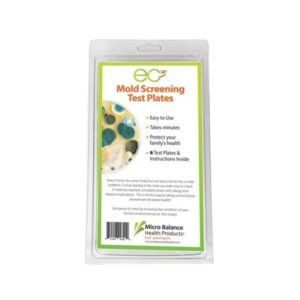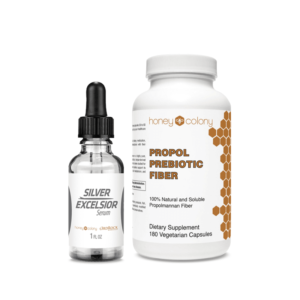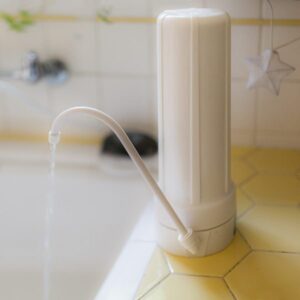Sharing is caring!
Every year, insurance companies spend approximately $2.5 billion to address water damage and mold. Stats indicate that 50 percent of buildings incur some form of water damage, mold, or dampness. The implications of water damage and mold are much more dangerous and common than we think. Water damage is also the main cause of mold growth in buildings and often occurs in hard-to-see places, like the inside walls or under floorboards. Mold is invisible but oftentimes, city officials will only step in if they can see it. This is unfortunate because by the time you see it, it’s often impacted you.
While some molds are harmless, the vast majority of the more than 100,000 types of mold species are detrimental to health. That is because many mold species release thousands of neurotoxic mycotoxins into the air. There is the mold and then there are the spores they emit. The microscopic spores can impact the immune system and deplete organs like the kidney, liver, and brain. Additionally, spores can induce chronic inflammation. They are neurotoxins and can wreak long term toxicity in the body, manifesting in a wide variety of symptoms.
If you suspect there is mold in your home or office, one of the first things to do is get out of there. Leave the environment and check-in with yourself to see if you feel better. Then there is a whole list of things one must do. Sadly leaving the area, just like if you’ve experienced a fire, is what needs to happen. And this oftentimes includes leaving behind all your belongings.
Mold: Invisible, Yet Destructive
Mold illness is described as a “great mimicker” because mycotoxins from water damage can cause a host of unpleasant health effects and every human is not the same. Symptoms range from memory loss and difficulty concentrating to sinus infections and chronic cough.
If you need to stay in the area until you plan out your next moves, breathing clean air is key, explains Catherine Fruechtenicht, a mold expert and founder of the blog Mold Free Living.
“Mold spores are tiny bacteria less than 4 microns in size — so small that as many as 250,000 spores can fit on a pinhead and a person can inhale as many as 750,000 of these spores per minute,” according to Indoor Air Quality Management. Ultra-fine particles, like mold spores, move into, accumulate, and can settle into the lower lungs and other areas.
“Getting the air mold-free is five times more important to your health than all treatment rendered by hospitals, doctors, and medication, and clean air is two times more important to your health than your genetic code,” adds Fruechtenicht, who has survived mold exposure herself.
Water Damage And Mold Damage
If you suffer from any of the following health issues, you may have mold due to water damage exposure. And even worse, subsequent mold growth. If you suspect that is the case, make sure to hire a qualified building inspector to do a thorough examination of your home or office space, and take appropriate measures to properly remediate the damage. You can also test for mold with a mold assessment test kit.
Here are 11 signs you may have mold and water damage exposure:
1. Fatigue, Weakness, Light Sensitivity, And Headaches
One of the challenges of identifying water damage and the associated symptoms of mold toxicity is that the symptoms often mimic other common illnesses. When mold is present in the body it affects many of our regulatory systems, including the release of cytokines. Cytokines are signaling molecules that cells release in order to mediate and regulate immunity and inflammation. Increased cytokine production often leads to symptoms that include light sensitivity and headaches. If your symptoms are recurring, chances are you’re reacting to mold. This is especially true if they happen more often when you are in the suspected building,
2. Poor Memory And Difficulty Concentrating
According to an article in Science News, a research experiment conducted by psychologists at the City University of New York determined that exposure to toxic mold spores over a period of three weeks caused mice to develop memory problems, as well as increased levels of anxiety.
Researchers noted that:
The behaviors [were] linked to increased inflammatory proteins in the hippocampus. Exposure to mold’s toxins and structural proteins may trigger an immune response in the brain. The findings … may help explain some of the conditions that people living in moldy buildings complain about, such as anxiety and cognitive problems.
3. Joint Pain And Unusual Skin Sensations Such As Tingling and Numbness
Researchers have determined, through blood tests for specific antibodies, that exposure to mold mycotoxins can cause neuropathic issues in the body; most commonly joint pain, muscle tremors, and strange skin sensations. If you suffer from these symptoms it might be a good idea to seek out a health professional with experience treating mold toxicity.
4. Shortness Of Breath, Chronic Cough, And Sinus Congestion
In a previous article, HoneyColony discussed the ways that mold allergy and toxicity are often confused with seasonal allergies. The first symptoms of mold exposure are often respiratory in nature. This can result in long term misdiagnosis and inaccurate treatment. If you have chronic or recurring allergies you may want to consider that there is toxic mold around you. If you discover mold, whether through professional testing or a mold test kit, it may be a good idea to invest in a personal desk air purifier like the IQAir Atem.
5. Mood Swings, Disorientation, And Depression
Dr. Mark Filidei, Director of Integrative Medicine at Amens Clinic, has encountered numerous patients whose symptoms had been consistently misattributed to other causes, like hormonal imbalances or aging. Rather than considering the possibility of mold as the underlying cause of such symptoms, it is much more common for doctors to simply prescribe medications.
Research done by Dale Bredesen and published in the 2016 journal Aging shows that type 3 cortical Alzheimer’s (usually early-onset and accompanied by depression) can be caused by inhalation of biotoxins; most commonly the mycotoxins that are released from mold. In-home mold diagnostic testing is one of the first steps in determining if mold is present. If results are positive for mold, blood and/or urine test are generally administered. From there a treatment protocol is established as the next step.
6. Abdominal Pain, Diarrhea, Bloating
Mycotoxins can wreak havoc on gut health, mainly through their tendency to boost the growth of bad bacteria and disrupt the delicate bacterial balance that our bodies depend on. Your immune system relies on the presence of beneficial bacteria. When gut health is compromised, it can cause a variety of long term health issues.
“Mycotoxins produced by mold impair gut health on a structural and functional level,” says Functional Medicine practitioner Chris Kresser. “They disrupt the balance of beneficial and pathogenic bacteria in the gut, increase intestinal permeability, interfere with nutrient absorption (causing malnutrition), generate oxidative stress and inflammation, and increase your susceptibility to bacterial, viral, and parasitic gut infections.” Even if you are not sure you are dealing with mold toxicity it is still a good idea to pay attention to our gut health, and give it a boost by taking a high-quality probiotic.
7. Metallic Taste In The Mouth
One of the more strange but prevalent symptoms of mold toxicity is a metallic taste in the mouth. Since this phenomenon is rarely caused by other factors, it is essential to seek treatment if you notice a metallic taste. This may be a sign of toxic black mold exposure. The only other instances where metallic taste occur are heavy metal toxicity and chemotherapy and radiation treatment.
8. Increased Urination Frequency
When mold biotoxins are present in the body they can disrupt the normal functioning of the pituitary gland, which is involved in the production of antidiuretic hormone (ADH). ADH helps regulate thirst and urination. When impacted, it can cause both increased thirst and increased urination frequency. This may become so severe that dehydration is the end result.
9. Static Shocks
Another strange symptom of mold is frequency in static electricity in the body, and as a result, more instances of static shock. This is related to disrupted ADH production. Disrupted ADH can lead to elevated levels of salt in the blood and sodium chloride on the skin. Additionally, it can cause increased thirst and urination. When that happens the body is more conducive to electricity and a person may experience increased incidents of static shocks.
10. Sweats And Unstable Body Temperature Regulation
Just as elevated levels of cytokines can lead to fatigue, disorientation, and headaches, they are also a major factor in body temperature regulation. Elevated cytokines increase body temperature, often causing fever or fever-like symptoms. This is a natural immune response and one of the ways that the body fights off illness-causing invaders like viruses, bacteria, and fungi. If you experience persistently increased body temperature, you may be suffering from mold toxicity. You may be also suffering if you experience many of the other noted symptoms.
11. Difficulty Sleeping
For many people with mold toxicity, sleep disturbances and insomnia are yet another challenge to contend with. One of the main reasons this happens is due to decreased melatonin production. Melatonin is a sleep-regulating hormone produced by the pineal gland. Naturally, the body’s reflexive attempts to remove itself from the damaging, mold toxic environment. Catherine Fruechtenicht, of Mold Free Living, discusses these issues, as well as offers some tried and true solutions for getting back on a balanced sleep schedule.
Mold toxicity from water damage is a dangerous and debilitating health issue that should not be ignored. If you think you have experienced water damage, make sure to take appropriate action to protect your health.

Rosanna Keyes is a freelance writer, editor and non-profit office administrator living in the Asheville, NC area. She has a B.S.S. from Ohio University with concentrations in English Literature, Creative Writing, and Geography. She is a passionate advocate for sustainable food production, herbalism and the preservation of wild spaces for plant and animal habitat.
-
 EC3 Mold Assessment Test Home Kit$36.00
EC3 Mold Assessment Test Home Kit$36.00 -
 Black Mold Begone Bundle
Black Mold Begone Bundle$133.18Original price was: $133.18.$126.74Current price is: $126.74. -
 CWR Imperial All-In-One Countertop Clean Water Filter w/ Metalgon
CWR Imperial All-In-One Countertop Clean Water Filter w/ Metalgon$218.00Original price was: $218.00.$199.99Current price is: $199.99.
Submit your story or essay to Buzzworthy Blogs.
- Tags: black mold, brain fog, fatigue, memory, mold exposure, water damage




